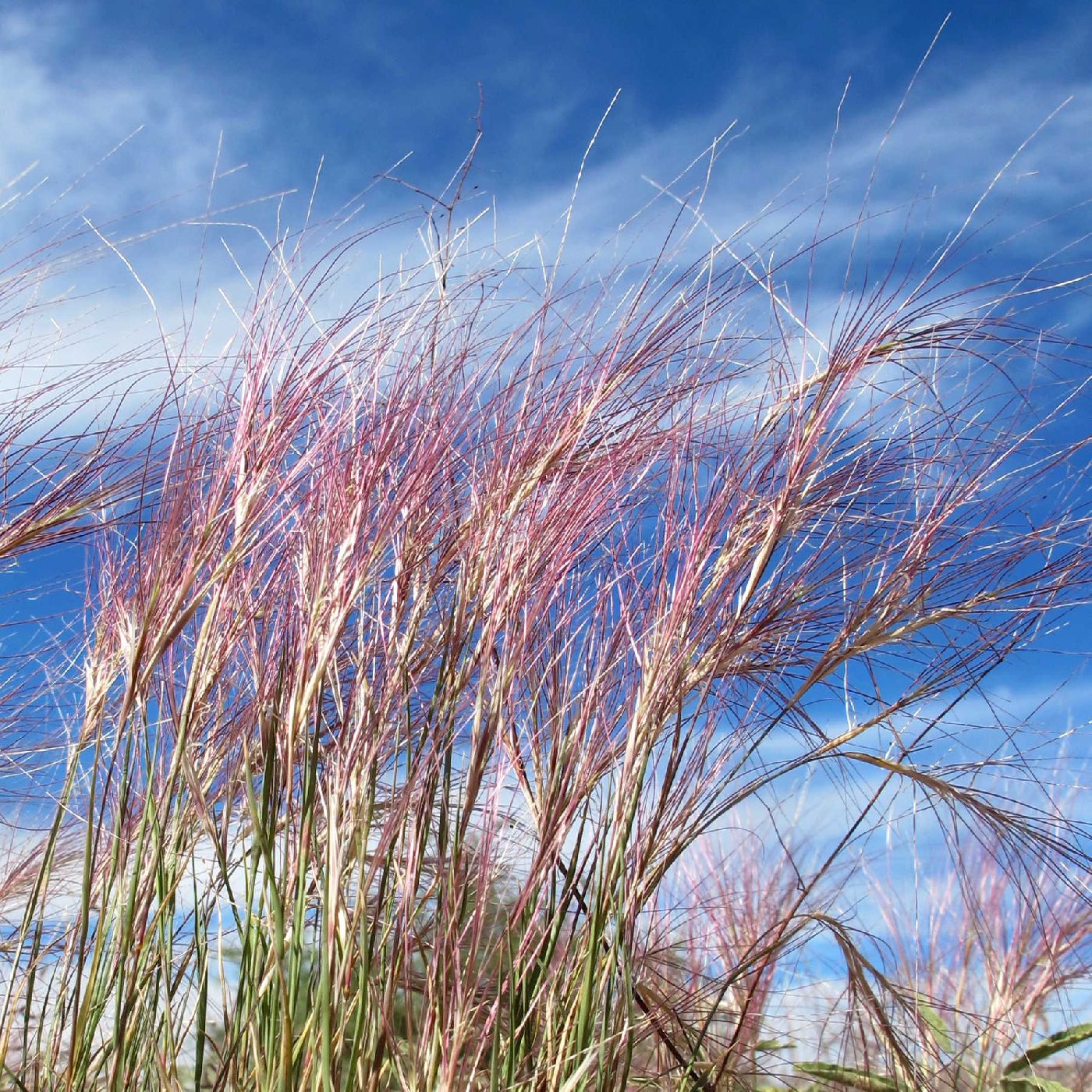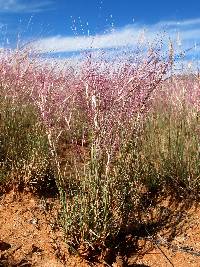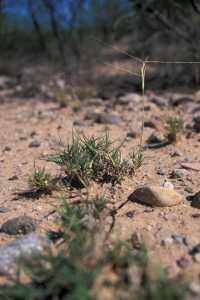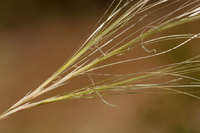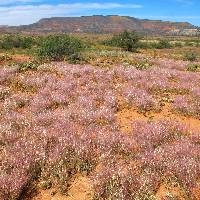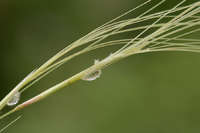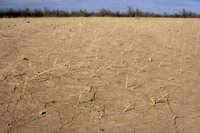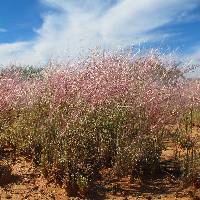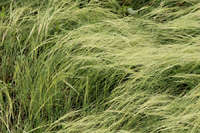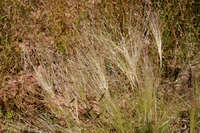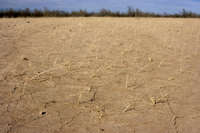Stolons to 50 cm, wiry, internodes 5-15 cm. Culms (5)10-20 cm, erect. Ligules about 1 mm; blades 2-8(12) cm long, 1-2 mm wide. Bisexual spikelets 2-4 cm, staminate florets below the pistillate florets. Staminate spikelets 2-3 cm. Pistillate spikelets subtended by a glumelike bract; lemma bodies 2.5-3 cm. 2n = 40.
Scleropogon brevifolius grows on grassy plains and flats, generally being most abundant on disturbed or overgrazed land. Its North American range extends from the southwestern United States to central Mexico; its South American range is from Chile to northwestern Argentina.
Common Name: burrograss
Duration: Perennial
Nativity: Native
Lifeform: Graminoid
General: Stoloniferous perennial grass, sometimes weakly rhizomatous, erect or decumbent at base; stems 10-20 cm; stolons wiry, creeping, to 50 cm.
Vegetative: Leaves mostly basal; sheaths short, strongly veined; ligules of hairs, 1 mm; blades firm, flat or folded, 2-12 cm long, 1-2 mm wide; basal leaves commonly hispid or villous.
Inflorescence: Terminal contracted panicle or raceme with few spikelets, 2-6 cm long, excluding awns; staminate and pistillate spikelets frequently but not always on separate plants. Staminate spikelets 2-3 cm, with 5-20 florets; glumes pale, 1-3-veined; lemmas 3-veined, unawned or short-awned, awns to 3 mm. Pistillate spikelets appressed to the branch axes, usually the 3-5 lower florets functional, upper florets reduced to awns; glumes strongly 3-veined, occasionally with a few fine accessory veins; lemmas narrow, 3-veined, veins extending into awns, awns 3-15 cm, scabrous, spreading or reflexed at maturity. Disarticulation above the glumes and below the lowest pistillate floret in a spikelet, florets falling together, the lowest floret with a bearded, sharp-pointed callus.
Ecology: Dry valleys and on open mesas below 5,500 ft (1676 m); flowers in the late summer and fall, also occasionally in the spring.
Distribution: s CA, s NV, s UT, AZ, NM, s CO, sw TX and w OK; south to s MEX; disjunct in South America.
Notes: Distinctive in being a rather short (<20 cm) dioecious, stoloniferous perennial that forms clumps; often grows in colonies creating wispy lighter colored patches on the landscape; often with plant bases becoming exposed. The female spikelets are distinctive, having multiple long, spreading awns 5-10 cm long. Abundant on overgrazed land, because of its unpalatability. Scleropogon is a monospecific genus.
Ethnobotany: Unknown
Etymology: Scleropogon is from the Greek for hard beard for the firm awns, while brevifolius means short leaved.
Synonyms: Schleropogon longisetus
Editor: SBuckley 2010, FSCoburn 2014, AHazelton 2015


